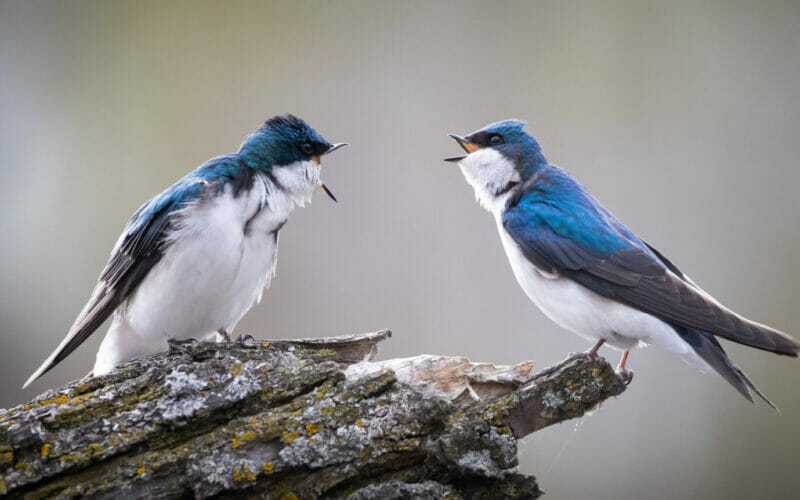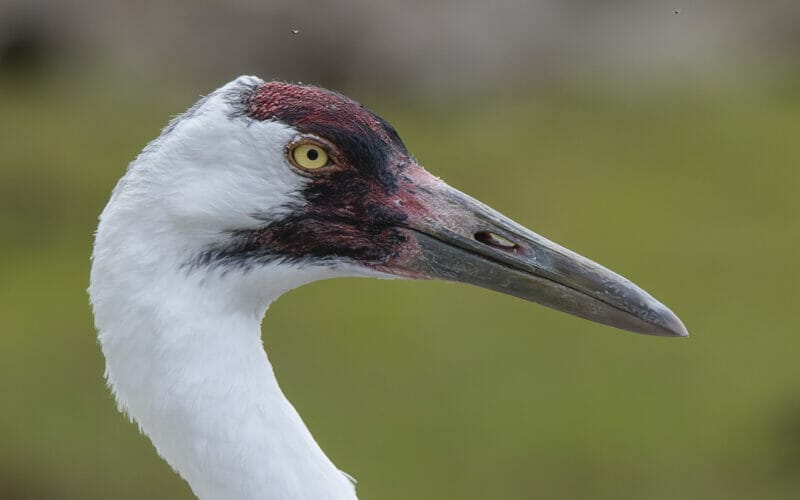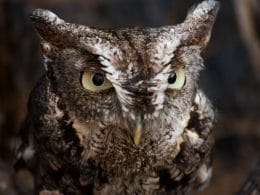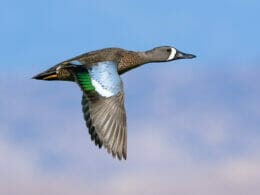Arizona is known as a hot, dry state but it still has a wide range of environments suitable for a myriad of bird species. Also, its proximity to Mexico results in some very exotic birds straying into the state. In this post, we are looking at some of the species found in Arizona. It was hard to pick just 10 but we hope you approve of our choices.
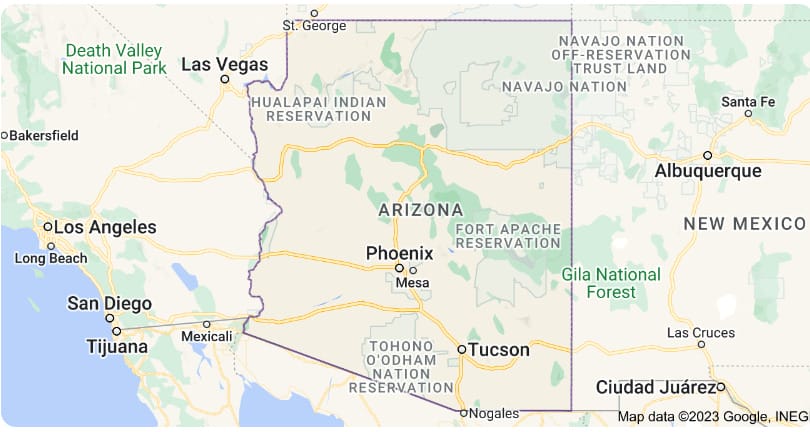
State of Arizona
The Grand Canyon State has the Cactus Wren as the state bird, which we think very appropriate. It is most famous for the Grand Canyon, an incredible visual image of what nature can do, with the Colorado river carving out this incredible channel, which at its deepest is 6,000 feet down. The rest of the state is covered by the Basin and Range Province which also includes the Sonoran Desert. This area is also characterized by huge canyons, cliffs and bluffs.
Birds of Arizona
Sitting at 4th of 51 states on the eBird ranking list, Arizona is an incredible place to bird with a recorded 561 species. The diverse and extreme environments of Arizona means there are suitable environments for hundreds of bird species. It is also home to visiting birds from Mexico and migrating birds moving south. Unique flora at the higher elevations encourages species usually found much further south. Here is our pick of 10 birds of Arizona.
10 Birds of Arizona
Canyon Towhee (Melozone fusca)
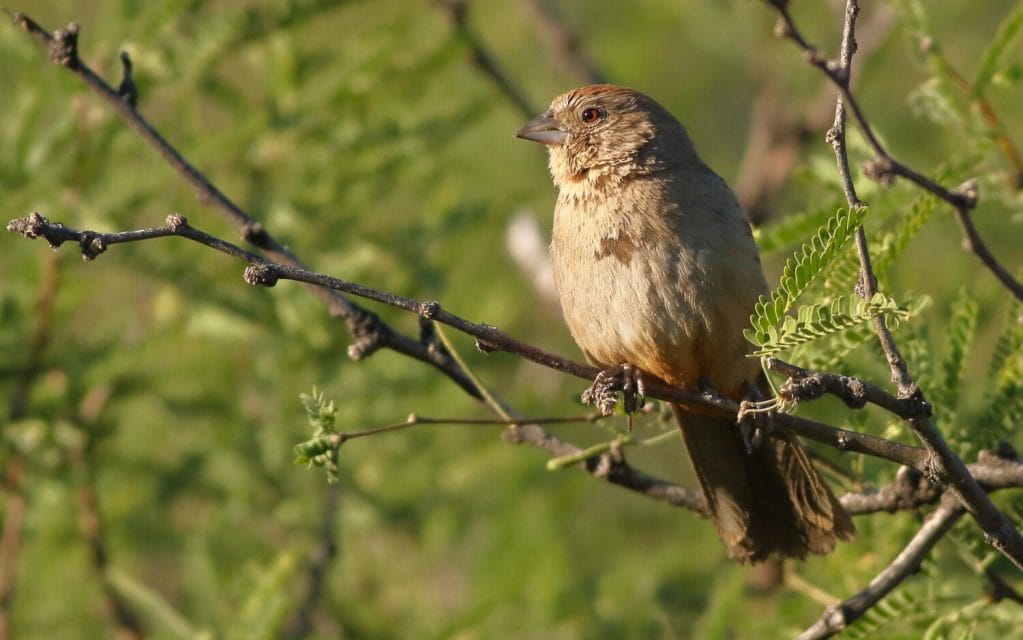

Identification and Size
This is actually a large sparrow with a long tail and brown body. It is a reddy color underneath the tail and has rough streaking on the breast.
Length: 8.3 – 9.8 inches
Wingspan: 11.5 inches
Weight: 1.3 – 1.9 ounces
Distribution
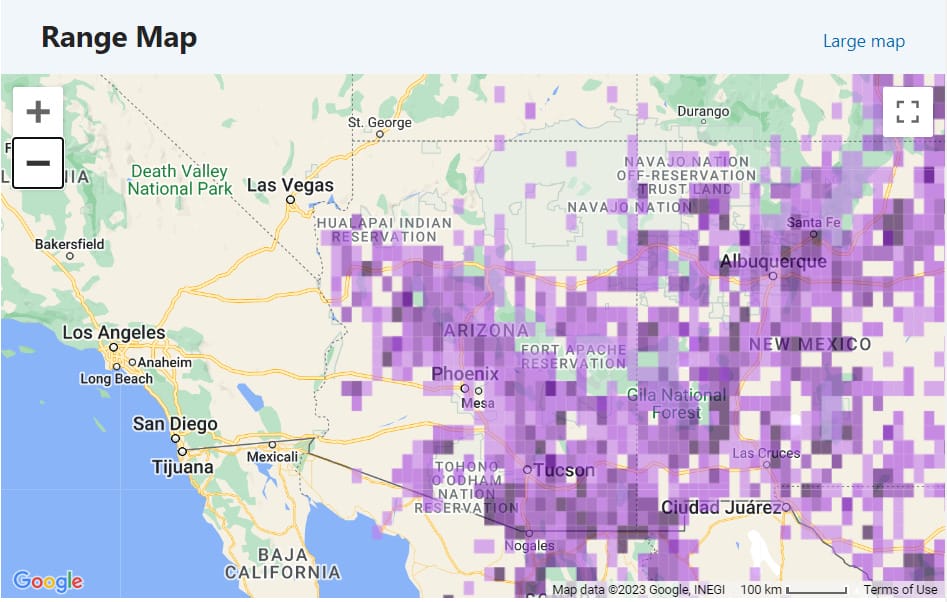
As seen in the eBird range map above and distribution chart below, the Canyon Towhee can be seen across southern parts of Arizona and is resident all year round.

Call
Diet
The Canyon Towhee eats seeds almost exclusively. It will take insects only occasionally.
Interesting Fact
At first, the Canyon Towhee may seem like it has a dull, repetitive call but it varies dramatically culminating in a delighful melody by the male during breeding time.
Montezuma Quail (Cyrtonyx montezumae)

Identification and Size
The female Montezuma Quail is a patterned brown quail with darker streaks on the back. The male is a remarkable looking bird with a blue bill, black and white head and buffy crest. Underneath and black and white spots and the back is a multi-patterned brown and cream arrangement.
Length: 7.9 – 9.1 inches
Wingspan: 16.1 – 16.9 inches
Weight: 4.3 – 8.1 ounces
Distribution
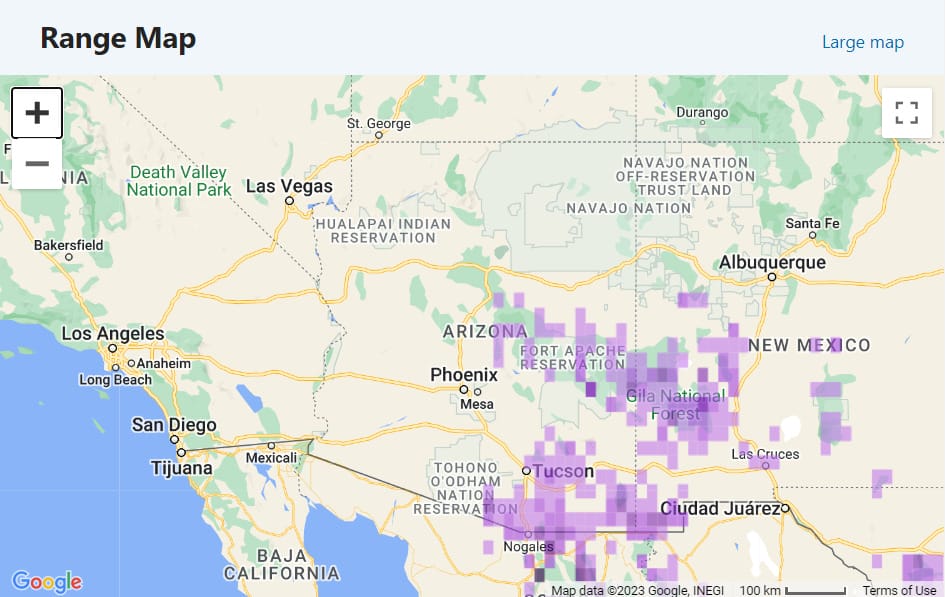
This quail is found in dry grassy areas and open woodland but is difficult to spot. Resident and present all year round, it can be found in central and southern parts of the state.

Call
Diet
As a quail, the Montezuma feeds on the ground and takes acorns, tubers and sedges.
Interesting Fact
The Montezuma Quail has long, curved claws that it uses for digging up food.
Sandhill Crane (Antigone canadensis)
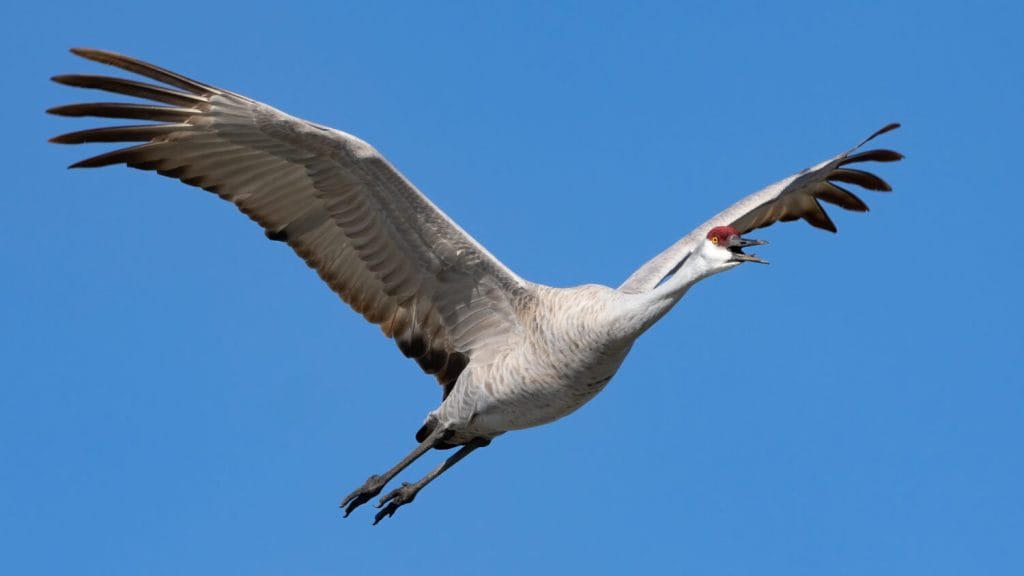

Identification and Size
A large and big bodied crane, the Sandhill is a slate gray color with brown patches on the back. The birds have a dark red crown and bright orange eye.
Length: 47.2 inches
Wingspan: 78.7 inches
Weight: 119.9 – 172.8 ounces
Distribution
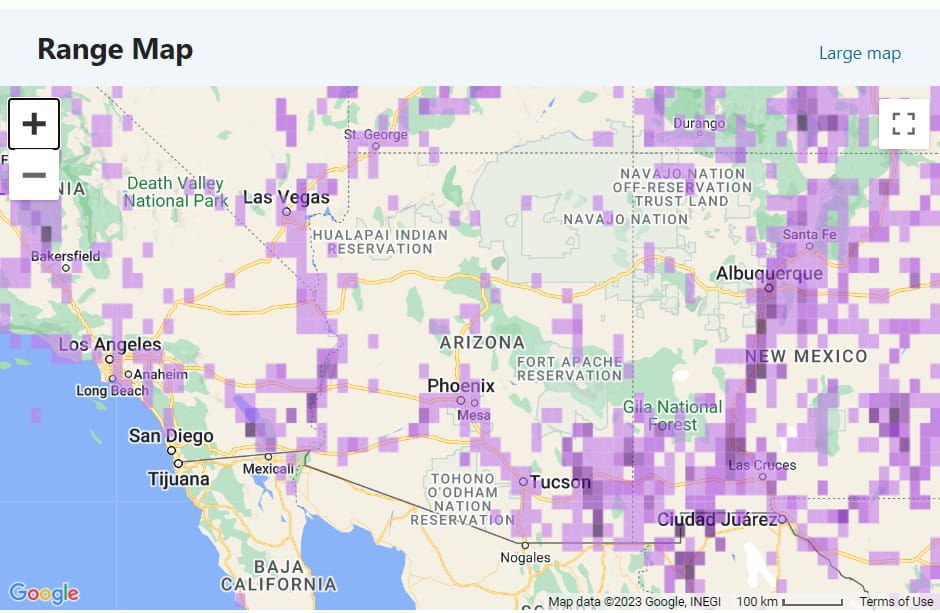
Found in marshes and open fields, the Sandhill Crane can be seen in appropriate habitat along the Nevada border and in the south and south eastern parts of Arizona.

Call
Diet
Surpisingly, the Sandhill Crane is omnivorous. It probes the ground for food and forages for different plant material as well as vertebrates and invertebrates.
Interesting Fact
The age at which the Sandhill Crane starts to breed varies enormously. Some begin at 2 years old but some won’t begin mating until they are 7.
Gila Woodpecker (Melanerpes uropygialis)
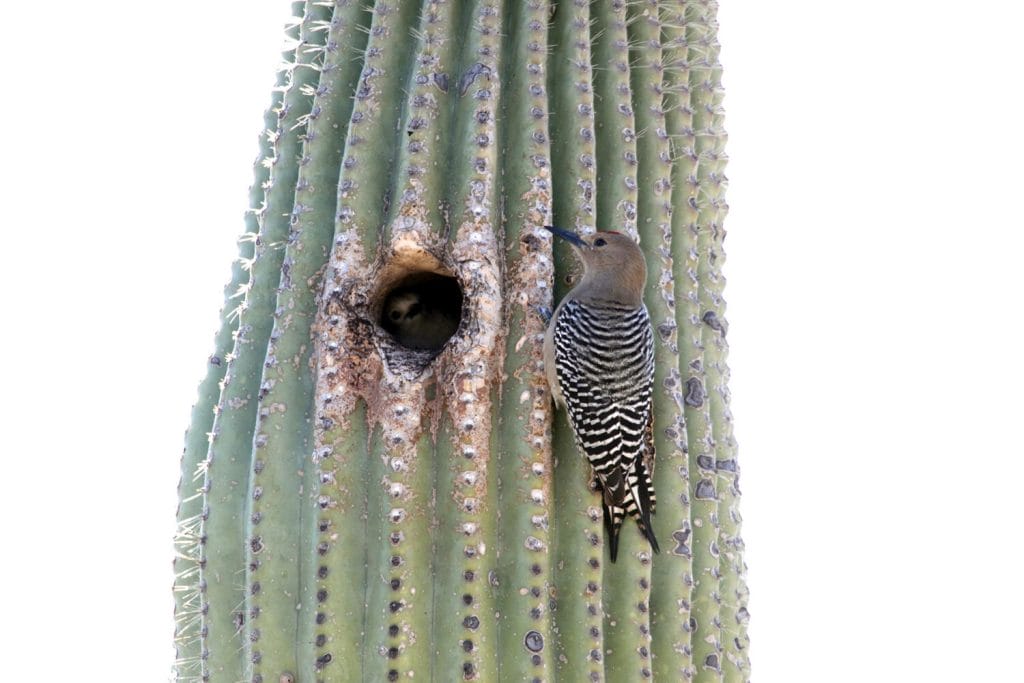
Identification and Size
The Gila Woodpecker is a buffy color on the front, deepening towards the head where it has a bright red crown. The back is a black and white pattern.
Length: 8.7 – 9.4 inches
Wingspan: 15.8 – 16.5 inches
Weight: 1.8 – 2.8 ounces
Distribution

Seen in desert areas, the Gila Woodpecker is present all year round in the south and south west of Arizona.

Call
Diet
The Gila Woodpecker has a wide range in its diet. From insects, beetles and moths to saguaro fruits and mistletoe berries, this woodpecker is very adaptable.
Interesting Fact
The Gila Woodpecker nests directly into cacti. It digs out the flesh and then waits for several months for it to dry out and seal before it lays eggs in it.
Chestnut-collared Longspur (Calcarius ornatus)

Identification and Size
The non-breeding Chestnut-collared Longspur looks like a large sparrow or pipit with mid brown coloring. In breeding, the head develops into black and white stripes on the crown, a buffy orange facial patch and dark brown nape.
Length: 5.1 – 6.5 inches
Weight: 0.6 – 0.8 ounces
Distribution
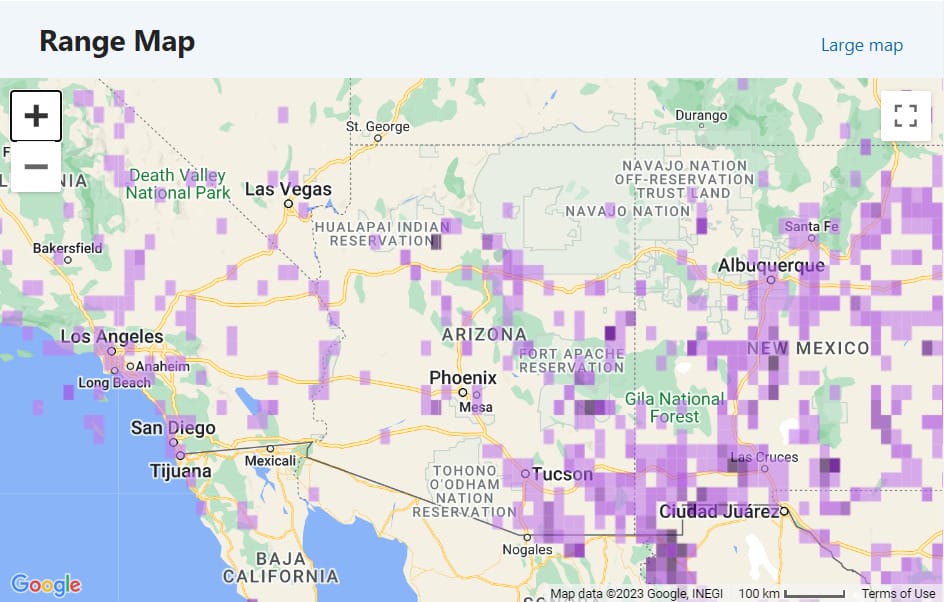
The Chestnut-collared Longspur is an uncommon visitor to Arizona and its presence is scattered across the state. Seen primarily in winter and spring.

Call
Diet
The Chestnut-collared Longspur forages for adult and larvae insects and grass seeds.
Interesting Fact
The name longspur refers to the long claw on the hind toe.
Whiskered Screech-Owl (Megascops trichopsis)
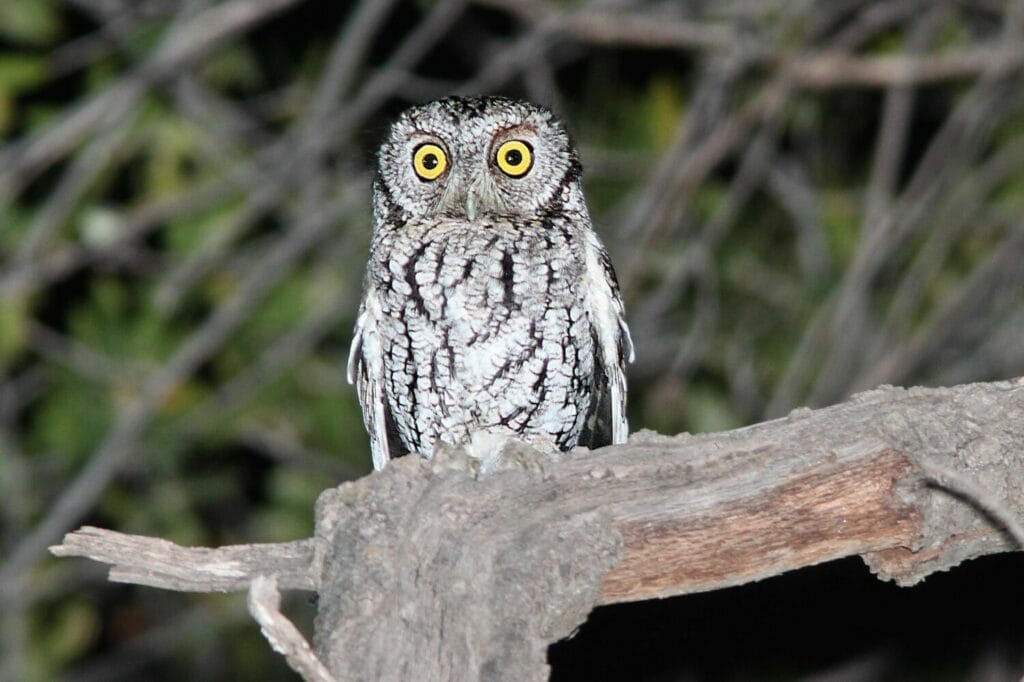
Identification and Size
The Whiskered Screech-Owl is a small bird with brown plumage which blends to a pale belly. Bright yellow orange eyes with black rims complete the picture.
Length: 5.9 – 7.5 inches
Weight: 2.5 – 4.2 ounces
Distribution

The Whiskered Screech-Owl is only seen infrequently in south eastern parts of Arizona in oak woodlands.

Call
Diet
The Whiskered Screech-Owl almost exclusively feeds on arthropods.
Interesting Fact
While other owls in Arizona choose woodpecker made nesting holes, the Whiskered Screech-Owl prefers naturally created ones.
Cactus Wren (Campylorhynchus brunneicapillus)

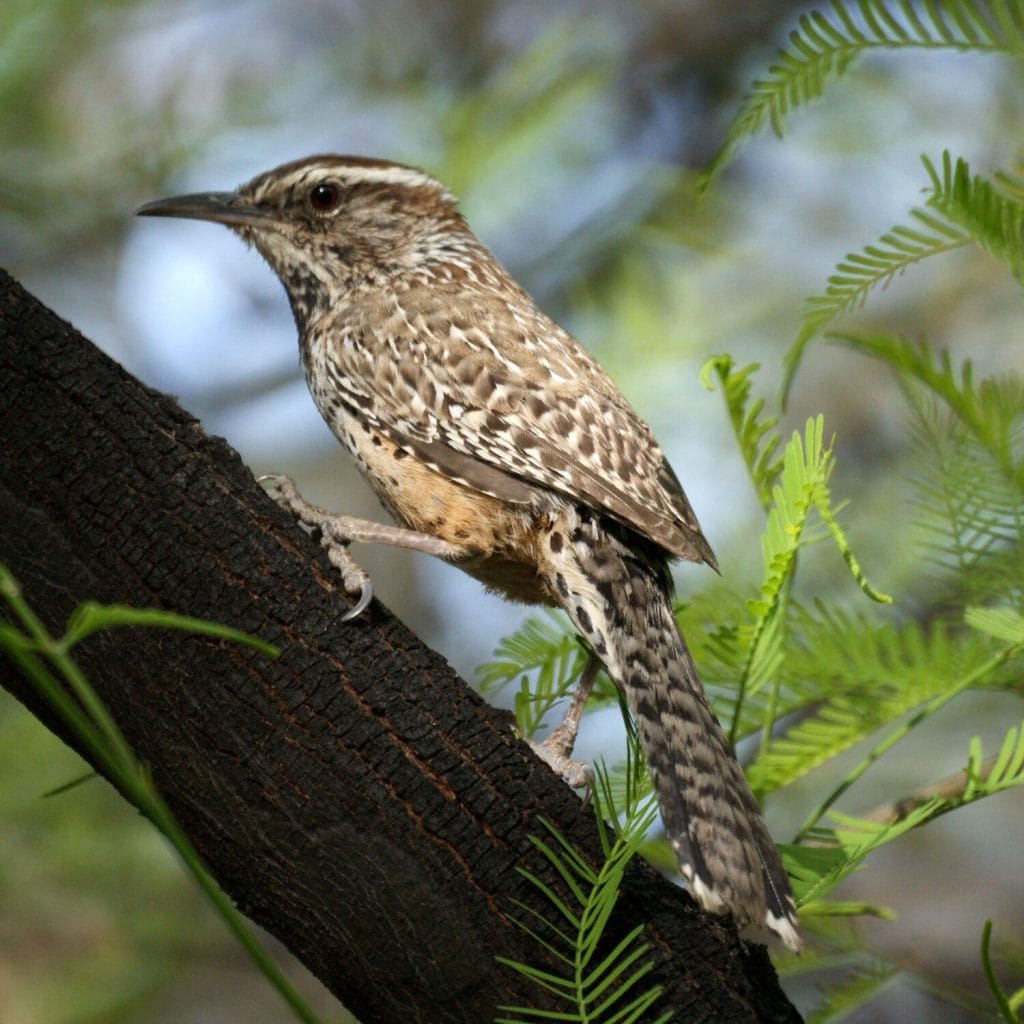
Identification
The state bird of Arizona is stunning with black spots on a buff belly. The back is grey with white streaks. It is a large bird, for a wren and has a long tail. The throat is black and it has a black and white streak on the head.
Length: 7 – 8.6 inches
Weight: 1.1 – 1.6 ounces
Distribution
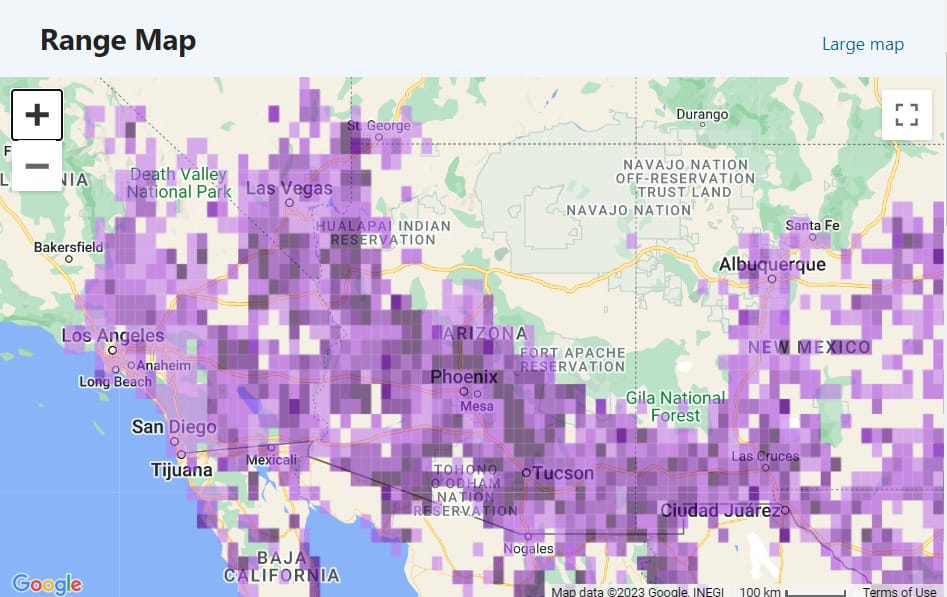
The Cactus Wren is a resident of Arizona and as seen in the map above, can be seen in the south and western dry areas of Arizona.

Call
Diet
The Cactus Wren is predominately insectivorous, taking beetles, grasshoppers and moths. It will also eat fruit when available.
Interesting Fact
The Cactus Wren is aggressive and will attack and destroy the nests of other desert dwelling birds to give its chicks the best chance of survival.
Elegant Trogon (Trogon elegans)

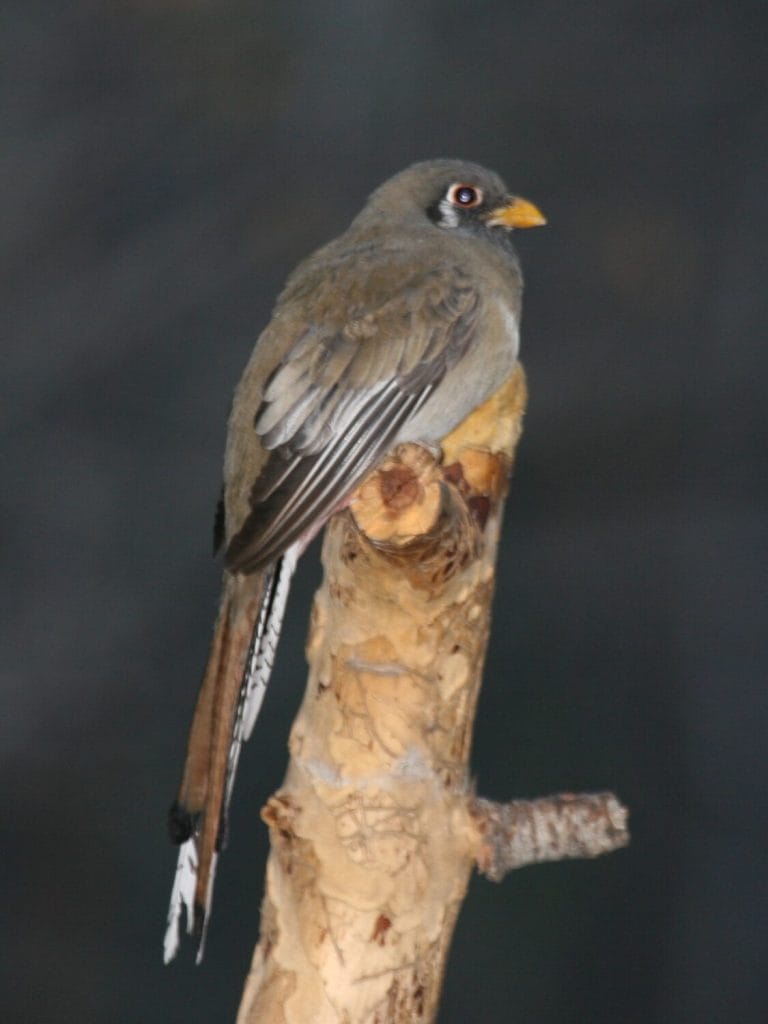
Identification
With an appearance that is more suited to the Amazon rainforest, the Elegant Trogon is a stunning, thickset bird with a long tail. The male plumage is a bright red belly with a white band and green/black throat and face. Silver wings move into a dark green back. The female is similar but more muted colored.
Length: 11.4 inches
Weight: 2.4 ounces
Distribution
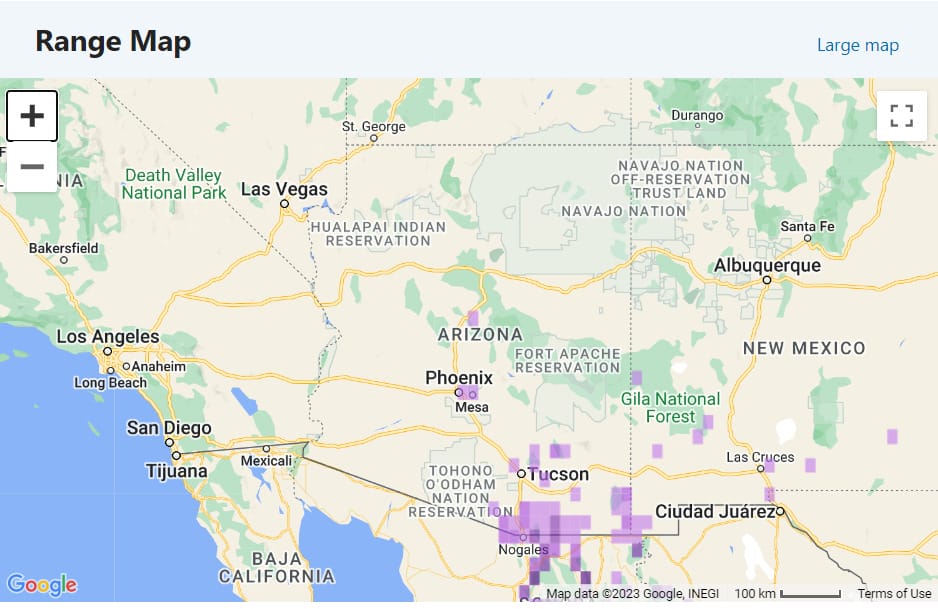
The Elegant Trogon is consistently found throughout the year in south western areas of Arizona. It has a mixed habitat from canyons to mountains and forests, usually at lower elevations.

Call
Diet
The Elegant Trogon searches for insects amongst tree leaves. It will also eat fruits.
Interesting Fact
The word ‘trogon’ comes from the Greek language. It means to gnaw and is suited to this bird as it digs for insects with its hooked bill.
Broad-billed Hummingbird (Cynanthus latirostris)
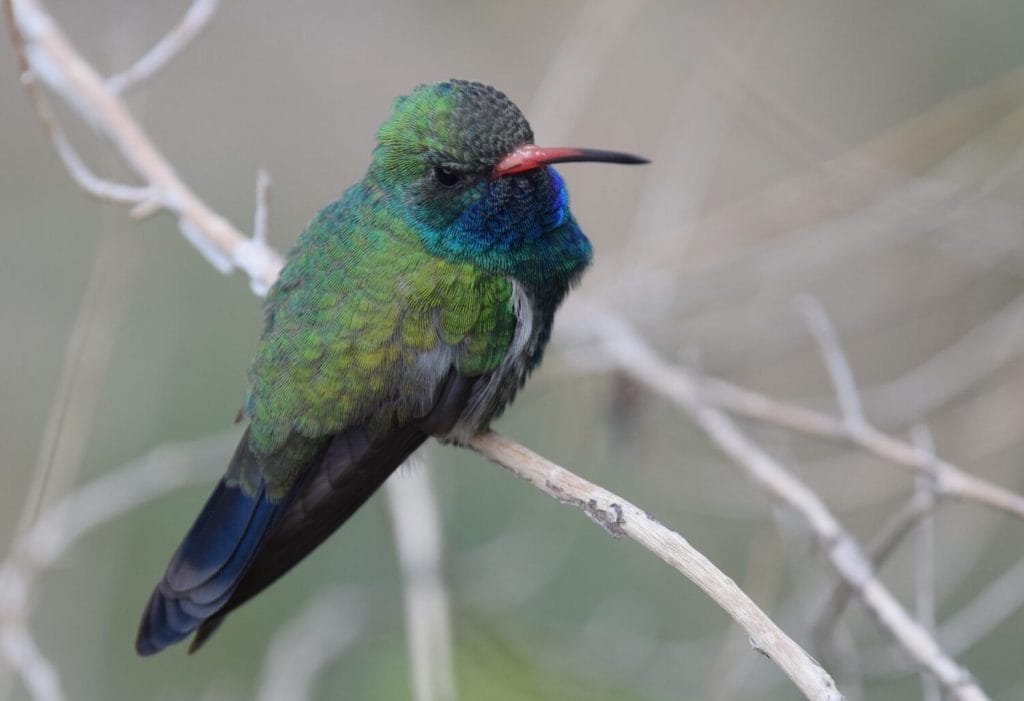
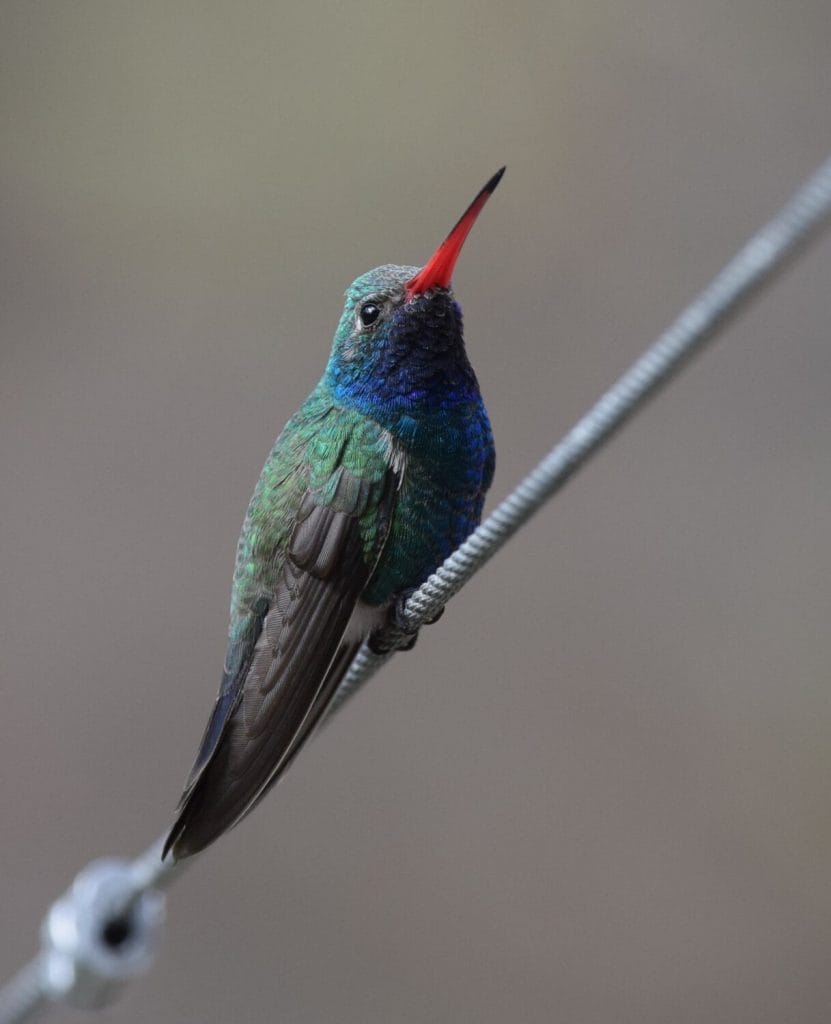
Identification and Size
An iridescent hummingbird with a mix of blues and greens on the back. A thick red bill is tipped with black and the breast and belly are a deep blue. The female has a gray green front instead.
Weight: 0.1 – 0.14 ounces
Distribution
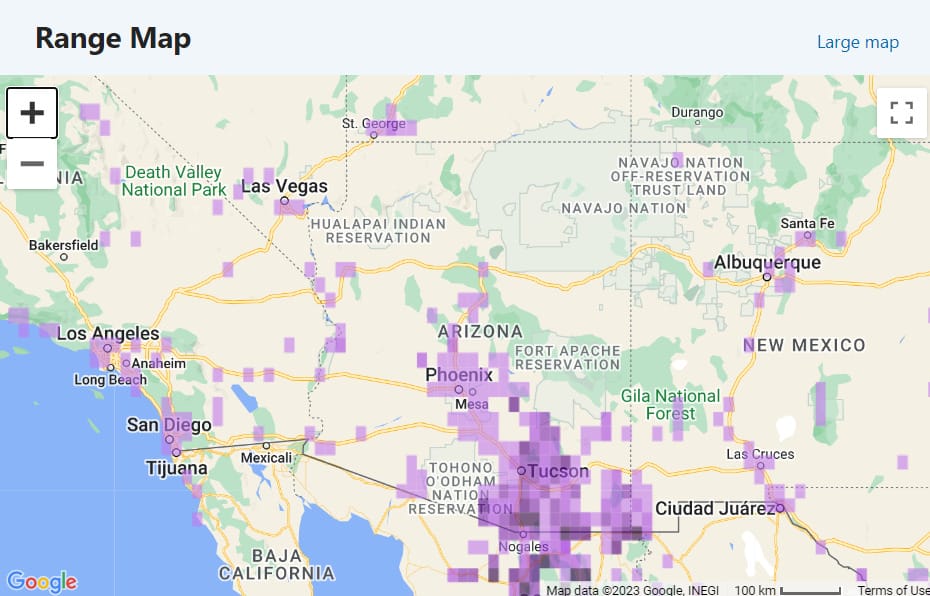
This hummingbird can be found in a mix of environments like riparian woodlands, canyons and forests. It is present all year round in the south east of the state.

Call
Diet
Like other hummingbirds, the Broad-billed hovers to take nectar and sometimes insects.
Interesting Fact
As we know, the Broad-billed Hummingbird is a specialist in hovering. In fact, it has such weak and small legs and feet that it is almost incapable of walking.
Painted Redstart (Myioborus pictus)
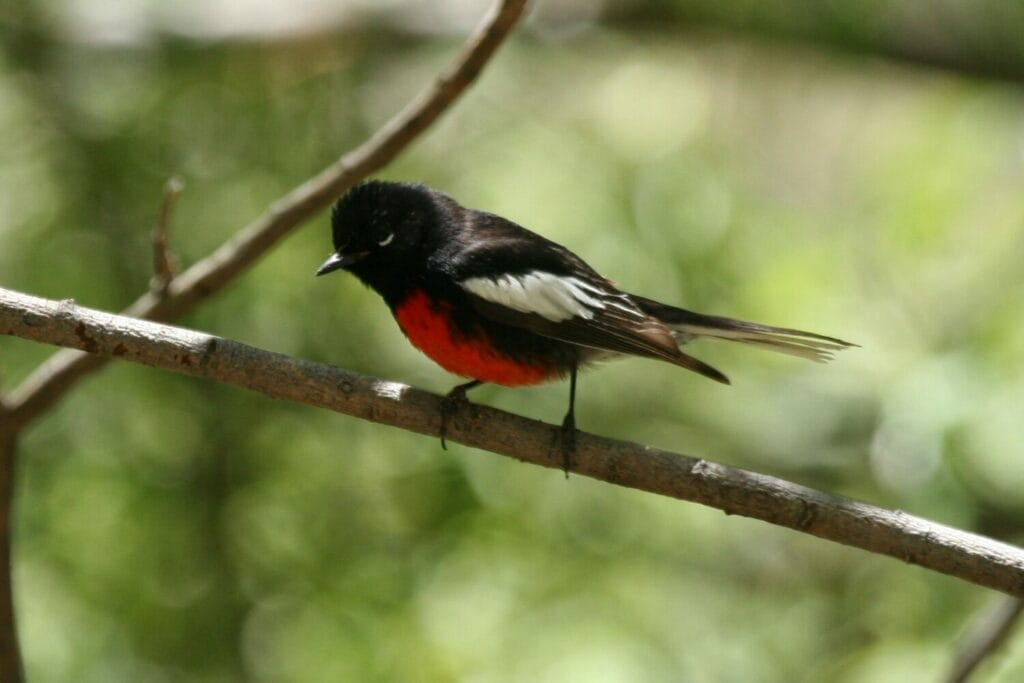
Identification and Size
The Painted Redstart is a striking warbler with a bright red breast and belly and black back. Strong white patches on the wing and a partial white eye ring make this bird unmistakable.
Length: 5.1 – 5.9 inches
Wingspan: 8.3 inches
Weight: 0.3 – 0.4 ounces
Distribution
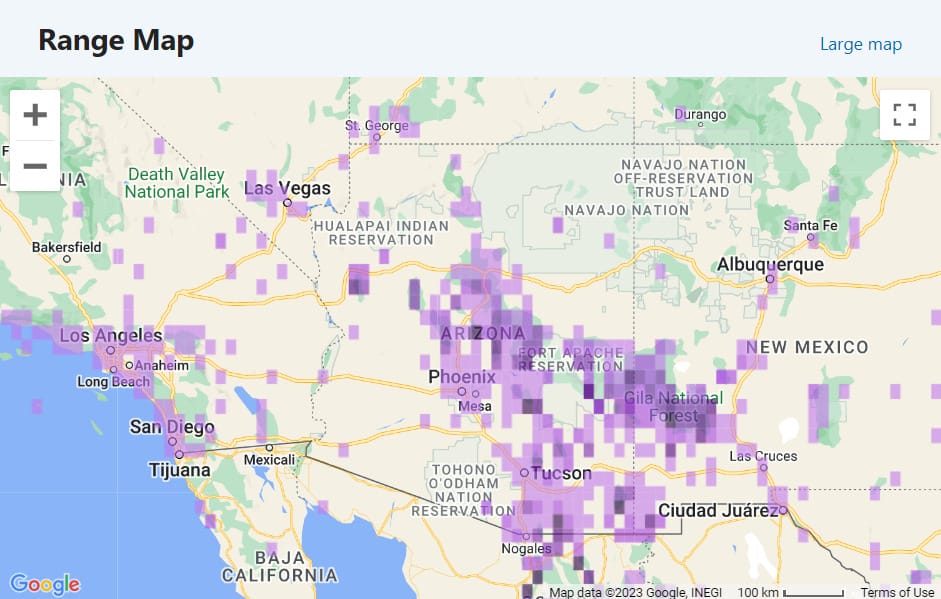
Present all year round in the center and south east of the state, the Painted Redstart is a fairly common resident.

Call
Diet
The Painted Redstart will supplement its diet in the summer with sugar water and suet at feeders, but it primarily eats insects.
Interesting Fact
The Painted Redstart fans its tail and it means different things at different times. During courting it is a signal to the female and when there are youngsters around, it helps them know where the adults are.
FAQs
Quail, hummingbird and raptors are all residents of desert areas of Arizona.
Quail are undoubtedly well adapted for the desert environment with the Montezuma Quail being the most unusual looking.
Yes, in any oasis there may be rails, galinules, ibis and others.
Well, that is my pick of Arizona birds. I particularly like the Montezuma Quail for its appearance and the Cactus Wren for its nesting bravery. Let us know which is your favorite.





